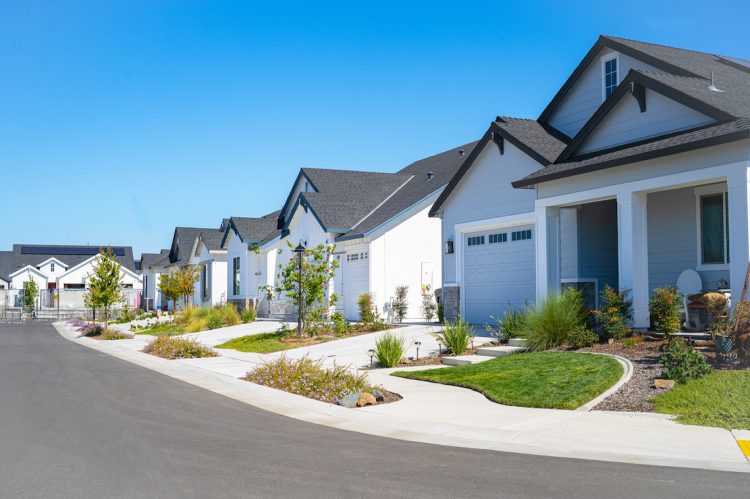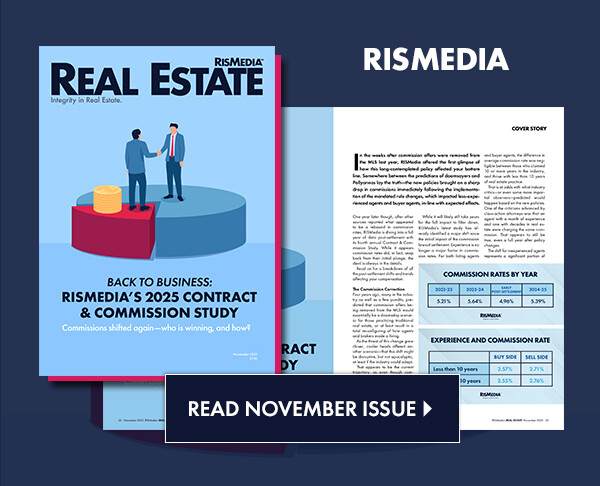In a highly anticipated report released this morning, existing-home sales rose 2%, from a seasonally adjusted annual rate of 4.01 million in July, up 0.8% year-over-year, according to the latest report from the National Association of Realtors® (NAR).
NAR’s Existing Home Sales report for July found that total housing inventory was up 0.6% from June with 1.55 million units—equal to 4.6 months of supply. Year-over-year, there was a 15.7% increase from July 2024’s inventory of 1.34 million.
The median existing-home price for all housing types was $422,400, up 0.2% from last year’s average of $421,400. This marks the 25th consecutive month of year-over-year price increases.
NAR Chief Economist Lawrence Yun said during a press conference ahead of the report that single-digit national price declines are certainly possible, perhaps even up to a 5% decline.
“Given that we had 50% price increase from pre-COVID to the recent, I think the 5% adjustment on prices for most homeowners is not consequential. I mean, for recent homebuyers, it’s definitely consequential, but for most homeowners not that consequential,” he explained. “So right now, essentially zero price growth is implying half the country is seeing price decline to some degree, because some prices are lower prices today in half the country.”
Single-family home sales rose 2% in July to a seasonally adjusted annual rate of 3.64 million, up 1.1% from July 2024. The median price rose 0.3% from last July to $428,500.
Sales for condos and co-ops were up 2.8% month-over-month to a seasonally adjusted annual rate of 370,000 units, down 2.6% year-over-year. The median price of $362,600 was down 1.2% from the previous year.
Yun said homebuyers are in the best position in more than five years to find the right home and negotiate for a better price.
“Near-zero growth in home prices suggests that roughly half the country is experiencing price reductions. Overall, homeowners are doing well financially. Only 2% of sales were foreclosures or short sales—essentially a historic low,” Yun said. “The market’s health is supported by a cumulative 49% home price appreciation for a typical American homeowner from pre-COVID July 2019 to July this year.”
While analyzing the local market data, Yun found that certain regions—like North Carolina’s Research Triangle, consisting of Raleigh, Durham and Chapel Hill; Nashville and Austin—had strong job growth and falling prices, but a rise in home sales.
“So maybe the price reduction is beginning to bring more buyers of better affordability and job prospects there—and also the Florida condominium market, again price decline, possibly leading to more people getting interested,” Yun said. “So as long as there is job growth and there is a price decline, I think people should view that as potentially enticing buyers to come into the market, which also means that price decline will be minimal, because if the buyers come in, they’re going to stabilize the prices or even push up the prices.”
Notably, according to the NAR Confidence Index, cash sales accounted for 31% of transactions—up 29% from a month ago and 27% from a year ago.
Yun said that, although unusual, he attributes this increase in cash sales to “record high stock market conditions and even the housing wealth being at a record high.”
“So, say, someone living in the Boston area decides to move to the Carolinas, they can make their cash purchase—even if they have little exposure on the stock market, because the housing wealth is so large,” he said. “So I think it’s a combination that people with exposure to the stock market, with exposure to housing wealth—they are in a very comfortable situation to make those cash purchases.”
Regional breakdown
Month-over-month, sales increased in all regions but the Midwest, where they fell. Year-over-year, sales fell in the West and increased in all other regions.
The Midwest region showed a 1.1% decrease in sales month-over-month to an annual rate of 940,000; year-over-year, sales were up 1.1%. The median price, at $333,800, was up 3.9% from the previous year.
Although the Midwest is the most affordable region, job growth is sluggish, explained Yun.
“One would anticipate that the Midwest region would be the least influenced by certain income mortgage rate changes, because qualifying conditions are much easier, but we always have that month-to-month little fluctuations, so it’s hard to decipher which region is seeing consistent, better performance in terms of sales,” Yun said. “One month it’s one region, another month is another region—so the Midwest, logic would suggest that would be the one consistently seeing better performance, but they are not.”
The Northeast region had the highest increase in month-over-month sales, at an 8.7% increase, to an annual rate of 500,000, up 2% year-over-year. The median price, at $509,300, is up 0.8% from July 2024.
In the South, month-over-month sales increased 2.2% to an annual rate of 1.85 million, up 2.2% from last year. The median price was $367,400, down 0.6% from the previous year.
The West experienced a 1.4% increase in month-over-month sales to an annual rate of 720,000. This was down 4% year-over-year. The median price of $620,700 was down 1.4% from last year.
Touching on the falling year-over-year prices in the South and the West, as opposed to the Midwest and the Northeast, Yun said that is mostly due to the rise in inventory.
“Across the Southern states, there’s been active home construction over the past five years…Homebuilders have been very active and the restriction on homebuilding is minimal in Southern states,” he said. “We have an oversupply in the Southern states…In the Midwest, the sales were down but those prices are continuing to rise in the Midwest, but even with a price increase, it is very affordable conditions.”
Industry commentary
Bright MLS Chief Economist Lisa Sturtevant said that despite today’s “slight uptick in sales” year-to-date non-seasonally adjusted sales are still tracking 1.3% below last year.
“Inventory has been rising and was up 15.7% compared to last July. But the fact that 2025 sales are tracking below last year suggests that buyers are still being held back. Affordability is the primary constraint,” she said. “The housing market needs a drop in mortgage rates and a slowdown in price growth—or even a drop in home prices—to bring more buyers into the market. Rates edged down again last week in anticipation of a September rate cut by the Federal Reserve.”
Realtor.com®’s Chief Economist Danielle Hale pointed at mortgage rate stability to account for the increase in existing-home sales.
“Mortgage rates steadied in May and June, when many of these homes would have gone under contract, making it easier for shoppers to navigate the market and their budgets without major surprises,” she said. “The recent stability gives incomes, which have continued to rise in most markets, a chance to catch up.”
Keller Williams’ Chief Economist Ruben Gonzalez said the new school year usually closes the door on the housing market’s peak buying season and “this summer fell short of expectations.”
“Unless mortgage rates move lower and stay there, the housing market will remain slow and regionally uneven, with locked-in sellers and rising inventory limiting both appreciation and the pace of home sales,” Gonzalez said. “If mortgage rates continue to trend down in the coming months, building inventory may offer buyers more leverage and choice.”












